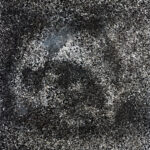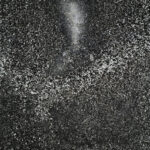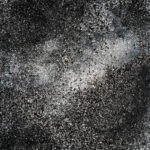Nicolai Howalt Endings
When a star seizes to exists, it swells and turns red, before finally exploding and becoming what we know as “stardust”. The large amounts of dust, which are send out into the universe, will over time become new stars, and in this way, every beginning starts with an end.
This astronomical doom is not unlike our own passing, as our ashes are combined with the ground and will over time create new connection, almost like alchemy. In the series, Howalt has photographed ashes from cremation and created a number of landscapes in black, grey and brown nuances, landscapes that almost look like a starry night. Through a presentation of the body, stripped from all cultural, religious and social context, death can be studied as a condition of life.
The poetic link between the universe and our own time on Earth is also described by Danish astronomer Tycho Brahes, who saw alchemy as “terrestrial astronomy”. At this point in history, alchemy was seen as chemistry, and by the door to his home Uraniborg in Hven, the astronomer depicted this sciences in allegorical reliefs with the text “by looking down I look up” and “by looking up I look down”. These phrases are not as cryptical as they may sound, because today scientists believes that all elements come from stardust, which continually has enriched the universe and created life. And in this way, the series både starts and ends with stardust, from dust to dust.



